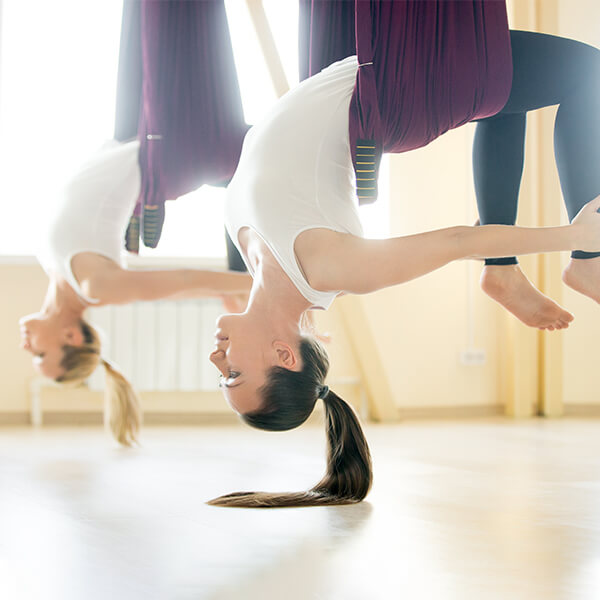Inversions are a key component to aerial practice, whether your learning aerial hoop, silks or anti-gravity yoga. Aerial inversions are how we get in or out of moves, provide an array of health benefits and improved flexibility and just as important, how we get those gorgeous instagram pictures!
While they are part and parcel with aerial practice, inversions can be one of those most intimidating parts of the class. Fear not new and improving aerialists, we’ve gathered the top 5 mistakes to avoid when practicing aerial inversions, so you know how to stay safe while flying.


Trust Your Apparatus
When beginning the practice of aerial arts it’s important that you trust in your chosen apparatus, the fabric of your silks and your hammock is there to support you, same as your metal hoop. Don’t be disheartened if it feels uncomfortable at first, you’re doing something your body isn’t use to and it will take for it to feel familiar and weightless in the fabrics.
When beginning, the motion of an aerial hammock can feel scary, start by easing yourself into more simplistic poses such as the womb pose before fully committing to an inversion, this way you can familiarise yourself with the movement of the apparatus before hand.
It’s All About Abs
Aerial Practice is heavily focused on ab engagement. Don’t be fooled into think an aerial class is all about flexibility or arm strength, getting in and out of inversions and holding those beautiful poses requires core engagement.
Engaging your abs while practicing aerial moves helps protects your lower back which makes it an essential part of getting in and out of moves, under no circumstance neglect your core.


Don’t Eat Before Your Class
This might seem self explanatory, but if you are attending an aerial class you’re going to be upside down, a lot! Make sure you allow ample time for your food to digest before attending your class, trust us, it’s not enjoyable feeling your food while trying an inversion. We recommend eating 1-2 hours before your class, and then when you finish, trust us you’ll have earned your next meal!
Remember to Breath
Like yoga, anti-gravity or aerial practice heavily relies on breathing techniques. Not only does focusing on your breathing allow you to get deeper into moves, like forward folding and back bending, it also keeps oxygen flowing throughout your body.
If you’re new to inversions you may feel nauseous or a little dizzy when you come out of the inversion, it’s important to gently fold yourself forward and breath deeply. Listen to your body and allow yourself time to recover between moves. The more you rely on the signs your body is giving you the more effective your practice will be.


Get Back Up Again
Aerial practice is not something you come across every day, so don’t get disheartened if you fall or can’t get a move. The most important thing is to get up and try again, if you find a move too difficult or beyond your skill level, ask your instructor to simplify it for you. Don’t compare yourself to others in your class, everyone has to start somewhere, so only go as far as your body is comfortable going, and progress each week.
Aerial practice involves a full body work out, working abs, arms, legs and mind to figure out complex manoeuvres, start small and build yourself up, but stick with it and you’ll be flying in no time.
At Elevate we offer classes for all skill levels in anti-gravity yoga, aerial hoops and silks, if you feel a class is progressing to fast ask to move to a lower level class, perfect the basics before moving on and don’t be afraid to get it wrong, just get back up again.
